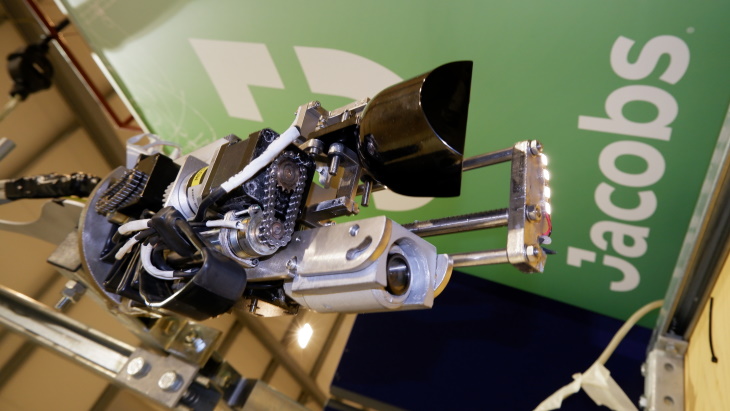The device will collect pebble-like debris that was deposited at the bottom of the reactor containment vessel following the meltdown caused by the earthquake and tsunami in March 2011. The exact nature of the debris is currently unknown, and examination of the retrieved debris samples will provide crucial data for the next steps in the clean-up and decommissioning of the damaged reactors on the site.
A prototype of the device has passed factory acceptance and performance tests to meet the requirements of Mitsubishi Heavy Industries (MHI), which is leading the project to develop the tool. It is expected that, following selection in Japan, a radiation resistant version will be built that will be able to carry out the task of retrieving samples from the highly-contaminated reactor.
Designed by Jacobs' engineers in the UK, the robotic tool had to meet more than 300 functional, operational, performance and geometric requirements. It also had to be small enough to enter the damaged containment vessel and pick up debris up to 10 millimetres in size by deploying a bucket-style retrieval device.
Trials have shown that a remote operator, guided by images from a built-in camera, will need no more than eight minutes to insert the device into the containment vessel and retrieve debris samples, thus minimising the impact of radiation damage on the functioning of the device.
MHI implemented this project through the International Research Institute for Nuclear Decommissioning, supported by funding from Japan's Ministry of Economy, Trade and Industry.
"This is a prime example of how we are combining innovative engineering and deep nuclear knowledge to help decommissioning agencies meet the challenge of transforming legacy sites into a safe end state," said Jacobs Energy, Security & Technology Senior Vice President Karen Wiemelt.
Tokyo Electric Power Company (Tepco) has been using remote techniques to investigate the condition of the reactors following the accident and to promote the decommissioning process of the Fukushima Daiichi plant. So far, robots have been used to investigate inside reactor buildings. The company expects to apply remote techniques further to the operations, such as the decontamination of the high-dose radiation area inside the reactor buildings and the removal of fuel debris from the reactor contaminant vessels or the reactor pressure vessels. Many companies and organisations, both domestic and overseas, have been supporting and cooperating on robots and the related technologies.
In Fukushima Daiichi units 1 to 3, the fuel and the metal cladding that formed the outer jacket of the fuel rods melted, then re-solidified as fuel debris. To reduce the risk from this fuel debris, preparations are under way for retrieving it from the reactors. The current aim is to begin retrieval from unit 2 and to gradually enlarge the scale of the retrieval. The retrieved fuel debris will be stored in the new storage facility that will be constructed within the site.
Jacobs was recently selected by Tepco to support decommissioning efforts at Fukushima Daiichi. Under a five-year framework agreement, Jacobs will draw on deep domain knowledge and decades of experience on major US and UK nuclear sites to provide programme and project management services to Tepco's Fukushima Decontamination and Decommissioning Engineering Company. The framework will address key challenges, such as treatment of contaminated water, decontaminated water release, used fuel, fuel debris and general site improvements.






_63865.jpg)
_18570.jpg)
_16159.jpg)





